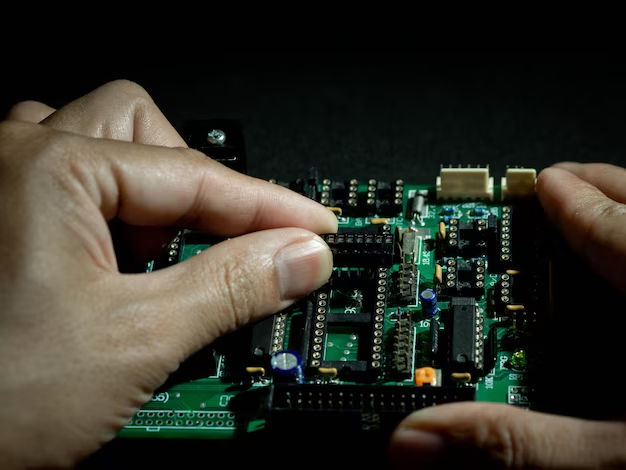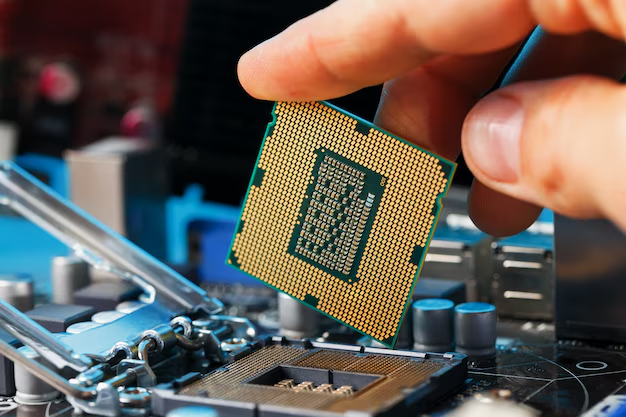I remember when I wanted to upgrade my PC and didn’t know which graphics card would work with my motherboard. If you’re in the same situation, don’t worry! I’ll explain how to choose the right graphics card for your setup.
To find out which graphics cards are compatible with your motherboard, check the PCIe slot version (like PCIe 3.0 or 4.0) and available space. Most modern motherboards support a wide range of GPUs, but always confirm compatibility with the manufacturer.
In this article, we will discuss how to determine which graphics cards are compatible with your motherboard. We’ll cover key factors like PCIe slots, space requirements, and power connections to help you make the best choice for your setup.
Understanding the Basics
What is a Graphics Card?
A graphics card, also known as a GPU (Graphics Processing Unit), is a hardware component that handles visual output for your computer. It’s crucial for gaming, video editing, and graphic design tasks.
Why Compatibility Matters
Compatibility between a graphics card and a motherboard is vital to ensure proper performance. An incompatible graphics card may not fit, work correctly, or could even damage your motherboard.
Key Factors to Consider
1. PCIe Slot Compatibility
Most modern graphics cards use a PCI Express (PCIe) slot. Ensure your motherboard has a PCIe x16 slot, which is the standard slot type for GPUs.
2. Physical Size (Form Factor)
Graphics cards come in various sizes. Check the physical dimensions of the card (length, height, and width) to ensure it fits within your PC case and doesn’t obstruct other components.
3. Power Supply Requirements
Some graphics cards require more power than others. Check the power requirements of the GPU and ensure your power supply unit (PSU) has the necessary wattage and connectors.
4. BIOS Compatibility
Older motherboards may need a BIOS update to support newer graphics cards. Check your motherboard manufacturer’s website for the latest BIOS updates.
5. Multi-GPU Compatibility (SLI/Crossfire)
If you plan to use more than one graphics card, ensure your motherboard supports multi-GPU setups like NVIDIA SLI or AMD Crossfire.

How to Check Your Motherboard’s Compatibility?
Identify Your Motherboard Model
- Windows Users: Use the “System Information” tool to find your motherboard model.
- macOS Users: Use “About This Mac” to check your system details.
- Physically Inspect the Motherboard: If possible, check the model number printed on the motherboard itself.
Check Manufacturer’s Website
Visit your motherboard manufacturer’s website and search for the specifications and supported hardware list.
Consult the User Manual
Your motherboard’s user manual will have detailed information about compatible components, including graphics cards.
Popular Graphics Cards and Their Compatibility
1. NVIDIA GeForce Series
The NVIDIA GeForce RTX and GTX series are popular choices for gaming and professional tasks. They typically use PCIe x16 slots and require sufficient PSU wattage.
2. AMD Radeon Series
AMD Radeon RX series cards are known for their competitive pricing and performance. They also use PCIe x16 slots and support Crossfire technology for multi-GPU setups.
3. Integrated Graphics vs. Dedicated Graphics
- Integrated Graphics: Built directly into the CPU and are good for everyday tasks like browsing the web, watching videos, and using office applications.
- Dedicated Graphics: Separate cards that provide higher performance for gaming and heavy workloads.
Steps to Install a New Graphics Card
- Power Down and Unplug: Shut down your computer and disconnect it from the power outlet.
- Remove Existing GPU (if any): Unscrew and gently remove the old graphics card.
- Install the New GPU: Align the GPU with the PCIe slot and push it in firmly.
- Secure and Connect Power Cables: Screw the GPU in place and connect any required power cables.
- Close the Case and Power Up: Close your PC case, plug it back in, and power up.
Troubleshooting Common Issues
No Display After Installing GPU
- Check Power Connections: Make sure all power cables are properly plugged in and secure..
- Reseat the GPU: Make sure the card is properly seated in the PCIe slot.
- BIOS Update: Update your motherboard’s BIOS if needed.
System Freezing or Crashing
- Check Drivers: Install the latest drivers from the GPU manufacturer.
- Inspect Cooling: Ensure adequate airflow and cooling to prevent overheating.
Motherboard/GPU compatibility?
To ensure motherboard and GPU compatibility, check three main things:
- PCIe Slot: The motherboard needs a PCIe x16 slot for the GPU.
- Physical Size: Ensure the GPU fits in the case.
- Power Supply: Make sure your power supply has enough wattage and the right connectors for the GPU.
How to Check Graphics Card Compatibility?
To check graphics card compatibility:
- Check the PCIe Slot: Make sure your motherboard has a PCIe x16 slot.
- Measure Space: Ensure your case has enough room for the GPU.
- Power Requirements: Confirm your power supply can handle the GPU’s power needs and has the right connectors.
- Monitor Connections: Ensure the GPU has outputs (HDMI, DisplayPort) that match your monitor.
Do I Need a Discrete Graphics Card for My System?
Whether you need a discrete graphics card depends on your system use. For basic tasks like web browsing or office work, integrated graphics are usually enough. However, for gaming, video editing, or graphic design, a discrete graphics card offers much better performance.
Best Graphics Card for Your PC Build?
The best graphics card for your PC build depends on your needs and budget. For gaming at 1080p, the NVIDIA GeForce RTX 3060 or AMD Radeon RX 6600 are great choices. For 1440p or 4K gaming, consider the RTX 4070 or AMD RX 7900 XT. If you’re focused on content creation or AI tasks, NVIDIA’s RTX 4080 or 4090 offer excellent performance.
Power Supply Compatibility?
Power supply compatibility depends on three main factors: wattage, connectors, and form factor. Make sure the power supply unit (PSU) provides enough wattage for all components, has the right connectors for the motherboard and GPU, and fits your PC case.

How do you tell if a GPU will fit?
To check if a GPU will fit in your PC, measure the available space in your case where the GPU goes and compare it with the GPU’s length, width, and height. Ensure there’s enough clearance for power connectors and airflow.
FAQs
How do I know if my motherboard supports a new graphics card?
Check the motherboard’s PCIe slot type, size compatibility, and power supply requirements.
Can I use any graphics card with my motherboard?
No, you must ensure it fits the PCIe slot, has sufficient power, and is compatible with your BIOS.
Do I need to update my motherboard BIOS for a new GPU?
Sometimes, especially for older motherboards. Check the manufacturer’s website for updates.
Can I use multiple graphics cards on my motherboard?
Only if your motherboard supports multi-GPU setups like SLI or Crossfire.
What happens if my PSU is not powerful enough for a new GPU?
The system may fail to boot, crash, or even damage the components.
How do I know what graphics card is compatible with my motherboard?
To find out if a graphics card is compatible with your motherboard, check the motherboard’s PCIe slot type (usually PCIe x16 for GPUs). Most modern GPUs work with any motherboard that has a PCIe x16 slot. Also, ensure your power supply can support the GPU’s power needs.
Does all graphics cards fit on all motherboards?
Not all graphics cards fit on all motherboards. Compatibility depends on:
- PCIe Slot: Most modern cards use a PCIe x16 slot, which must be present on the motherboard.
- Size: The card must fit inside the case, and there must be enough space on the motherboard.
- Power: Ensure the PSU has the required connectors and wattage.
- BIOS/UEFI: Older motherboards might not support newer cards due to BIOS/UEFI differences.
Always check your motherboard, case, and power supply specifications before buying a graphics card.
How do I know what graphics card slot I have on my motherboard?
To find out what graphics card slot you have on your motherboard:
- Check the Manual: Refer to your motherboard’s manual.
- Visual Inspection: Look inside your computer case for a long PCIe x16 slot, usually near the CPU.
- Software Tools: Use tools like CPU-Z or Speccy to check motherboard details.
- Look Up the Model: Search your motherboard’s model online for specifications.
What GPUs are compatible with my CPU?
Most GPUs are compatible with any CPU as long as the motherboard has a suitable PCIe slot (usually PCIe x16). The key is to match the GPU’s performance level with your CPU’s power to avoid bottlenecks and maximize efficiency.
Do you have to match motherboard and GPU?
You don’t need to match a specific motherboard to a GPU. Most modern motherboards with a PCIe x16 slot will work with most GPUs. Just ensure the GPU fits in your case, and your power supply can handle it.
Do I need to upgrade my motherboard for a new GPU?
You usually don’t need to upgrade your motherboard for a new GPU. As long as your motherboard has a PCIe x16 slot, it should support most modern GPUs. Just check the power supply, case size, and compatibility of other components.
Are graphics cards universal to motherboards?
Most graphics cards are universal to motherboards, thanks to the PCIe x16 slot standard. As long as the motherboard has a PCIe x16 slot, it should work with almost any GPU. Ensure your power supply and case can support the new GPU.
Do all GPUs have the same slot?
Most modern GPUs use the PCIe x16 slot, which is common on motherboards. However, older GPUs may use different slots like AGP or PCI. For best compatibility, check that your motherboard has a PCIe x16 slot for a modern GPU.
GPU compatibility checker?
To check GPU compatibility with your system, you need to confirm:
- PCIe Slot: Ensure your motherboard has a PCIe x16 slot.
- Power Supply: Check if it has enough wattage and the right connectors.
- Physical Space: Make sure your PC case has room for the GPU.
What graphics cards are compatible with my motherboard gaming?
To find a compatible graphics card for gaming with your motherboard:
- Check PCIe Slot: Your motherboard should have a PCIe x16 slot, which is standard for most GPUs.
- Power Supply: Ensure it meets the GPU’s power requirements and has the necessary connectors.
- Physical Size: Verify that the GPU fits in your PC case.
Can GPU not be compatible with motherboard?
Yes, a GPU can be incompatible with a motherboard. This usually happens due to:
- Slot Type: If the motherboard doesn’t have the correct PCIe slot (e.g., PCIe 3.0 vs. PCIe 4.0).
- Size: The GPU might be too large to fit in the case or block other components.
- Power Supply: The power supply might not provide enough wattage or the right connectors for the GPU.
Conclusion
Finding the right graphics card for your motherboard doesn’t have to be a challenge. By understanding key factors like PCIe slot type, size, power requirements, and BIOS compatibility, you can confidently choose a graphics card that works well with your system.

Leave a Reply